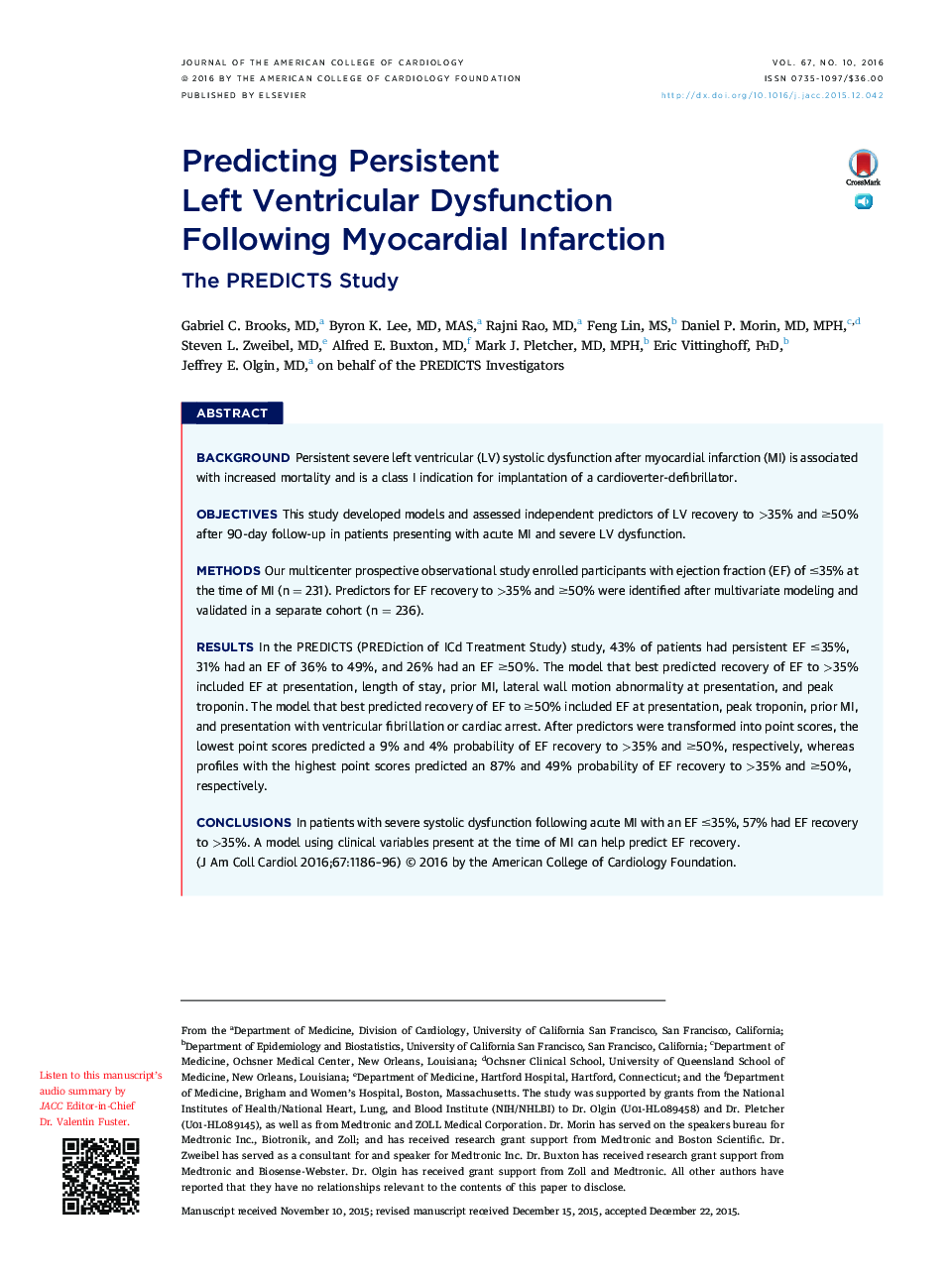| Article ID | Journal | Published Year | Pages | File Type |
|---|---|---|---|---|
| 5981804 | Journal of the American College of Cardiology | 2016 | 11 Pages |
BackgroundPersistent severe left ventricular (LV) systolic dysfunction after myocardial infarction (MI) is associated with increased mortality and is a class I indication for implantation of a cardioverter-defibrillator.ObjectivesThis study developed models and assessed independent predictors of LV recovery to >35% and â¥50% after 90-day follow-up in patients presenting with acute MI and severe LV dysfunction.MethodsOur multicenter prospective observational study enrolled participants with ejection fraction (EF) of â¤35% at the time of MI (n = 231). Predictors for EF recovery to >35% and â¥50% were identified after multivariate modeling and validated in a separate cohort (n = 236).ResultsIn the PREDICTS (PREDiction of ICd Treatment Study) study, 43% of patients had persistent EF â¤35%, 31% had an EF of 36% to 49%, and 26% had an EF â¥50%. The model that best predicted recovery of EF to >35% included EF at presentation, length of stay, prior MI, lateral wall motion abnormality at presentation, and peak troponin. The model that best predicted recovery of EF to â¥50% included EF at presentation, peak troponin, prior MI, and presentation with ventricular fibrillation or cardiac arrest. After predictors were transformed into point scores, the lowest point scores predicted a 9% and 4% probability of EF recovery to >35% and â¥50%, respectively, whereas profiles with the highest point scores predicted an 87% and 49% probability of EF recovery to >35% and â¥50%, respectively.ConclusionsIn patients with severe systolic dysfunction following acute MI with an EF â¤35%, 57% had EF recovery to >35%. A model using clinical variables present at the time of MI can help predict EF recovery.
